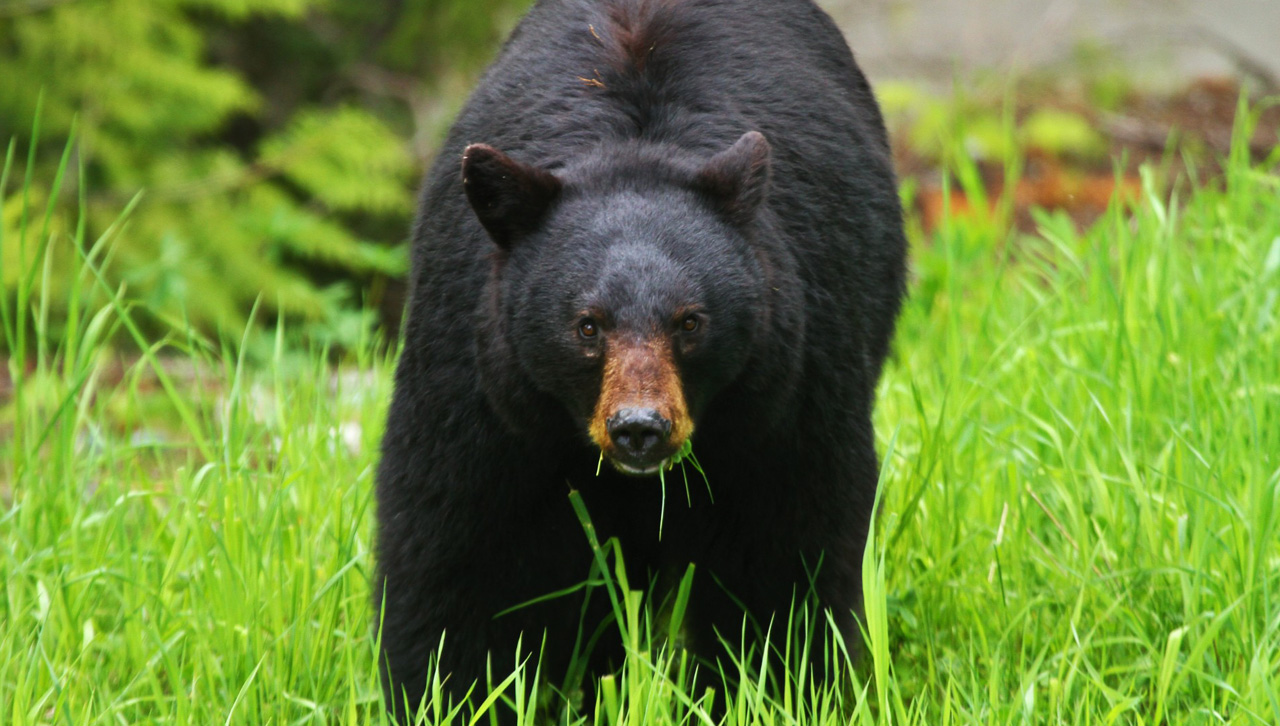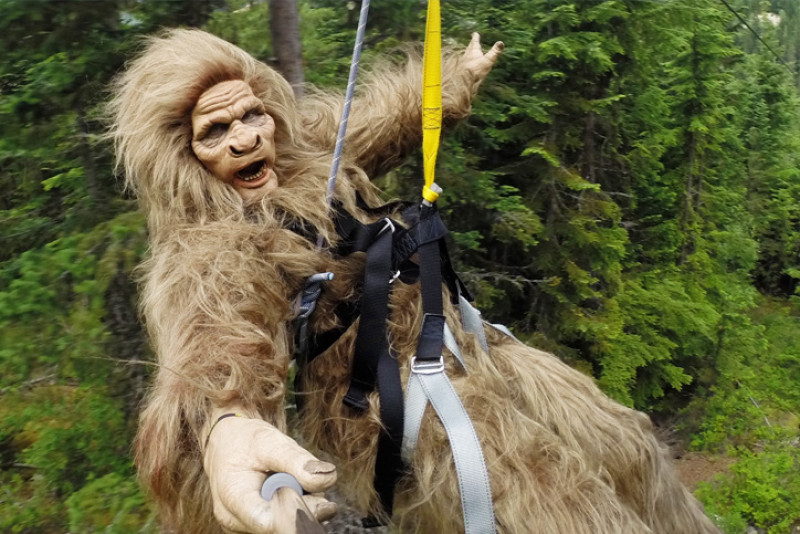 Call Toll Free: 1.866.935.0001
Call Toll Free: 1.866.935.0001
 Call Toll Free: 1.866.935.0001
Call Toll Free: 1.866.935.0001


Ziptrek tours are all named after local wildlife - whether living, extinct or legend! Since Ziptrek's inception we've shared interesting facts about the local flora and fauna with our guests, we welcome you to read on and learn about the tour namesakes.
The Bear tour is named for the local black bears, it is estimated that British Columbia has 25% of all black bears in Canada. The density of the Whistler population means that wherever you are you are likely within 1 kilometer of a bear at all times! At this time of year black bears can spend up to 23 hours eating, trying to gain enough weight for hibernation. When they hibernate a bear's heart rate drops from 40-70 beats per minute to only 8-12 beats, while their metabolism slows down by half and their body temperature drops to only 3-7 degrees centigrade!
If you've been to Whistler before you may have noticed bear locks on all of the public garbage cans, this is just one of the steps Whistler has taken to become a community in harmony with bears, to learn more about living with bears visit Bear Smart.
The Eagle tour is named after the coastal resident populations of bald eagles and golden eagles. Eagles love B.C. because of the tall trees for nesting, abundant salmon runs and other prey. Golden eagles can look very similar to a juvenile bald eagle but have feathered legs and a smaller beak. Both eagles can reach wing spans of 6-7 feet! They can typically get up to speeds of 120 km/h (75mph) in flight, so it is no wonder some of our fastest ziplines are found on the Eagle Tour! Bald eagles are only found in North America which is what makes them such an iconic symbol in the U.S.A. and Canada.
The Mammoth Tour is the Bear Tour and Eagle Tour combined making it the largest tour we offer, hence why it is named after the extinct megafauna, the woolly mammoth. The woolly mammoth was one of the largest mammals to habitat B.C. in the Pleistocene period. It would have roamed the tundra during the ice age feeding on grass and other vegetation, co-existing with early humans for a time. Their tusks grew up to 5 ft long and they weighed up to 6 tons!
The Sasquatch is named after the local legend (also known as Bigfoot) which is a large, hairy, bidpedal humanoid creature that is said to inhabit forests in the Pacific Northwest region. The term Sasquatch is an Anglicized derivative of the Halkomelem word sásq'ets. Halkomelem (Hal'qeméylem) is a language of various First Nations people in B.C., specifically the Central Salish. There is no way to tell when the first sasquatch sighting occured but we can tell you the lore has grown into legendary proportions. This is why we thought it was a natural fit for our record breaking and guaranteed to be legendary zipline!
We use tools such as cookies and similar technologies to track, analyze, and personalize your experience and ads, and share data with our partners. To find out more about the cookies we use, see our Privacy Policy. Change your preferences anytime using the Manage Cookies link at the bottom of the page.